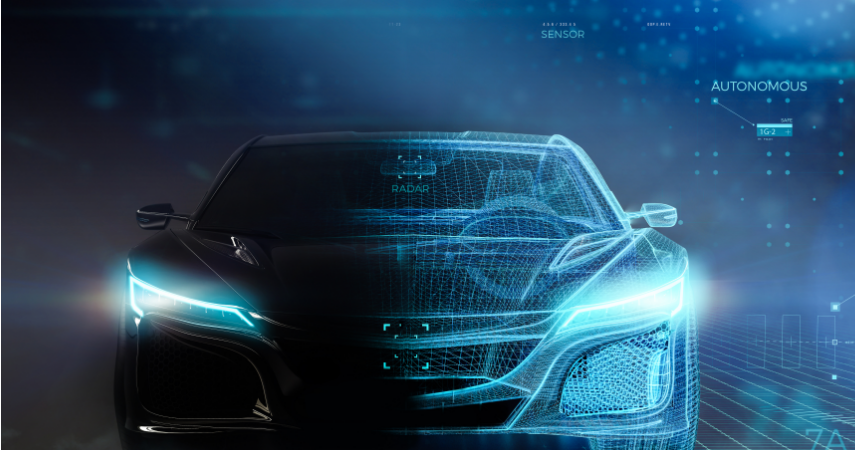
Digital twins: bridging the physical and digital
- 3 minute read
-
Author: Mobica
Digital twins can drive real value and insights for decision-makers, so it’s no surprise more and more companies are exploring the opportunities they offer and the best approach to implementing this practice.
In this blog, we consider everything you need to know about digital twins.
What is a digital twin?
A digital twin is a virtual model of a physical object or system. This virtual version mirrors the physical asset out in the field, with sensors on the former transmitting vital data about the object’s performance. This data can then be analysed and interrogated, with the digital twin able to run a variety of simulations in order to assess performance issues and potentially identify areas of improvement. These improvements can then be applied to the original physical asset, enhancing its capabilities and potential.
.jpg?width=517&height=269&name=digital-twin-image-1-(1).jpg)
What are the main benefits to digital twins?
Firstly, product research and development is enhanced. By using data to better understand the anticipated performance outcomes from products, decision makers can refine and fine-tune solutions before they go into production - saving costs and ensuring assets are optimised for the long run.
Secondly, the ability to create a virtual model of a real-life object can help turbocharge efficiencies. By mirroring and monitoring production systems, owners and operators can constantly improve their system’s overall performance. For example, the replicated version can feed insights into AI and machine learning systems. These might allow it to better plan for maintenance or upgrades - based on how quickly parts are predicted to wear - or otherwise improve its operational performance.
Thirdly, digital twins can even help those responsible determine what to do with products that reach the end of their lifecycles. While that particular digital twin will no longer be active, the learnings gained throughout the duration of that product’s lifecycle can go on to inform future developments.
Can you give me an example of digital twins?
The manufacturing sector is one industry that’s rapidly taken advantage of digital twins’ potential. From automotive and aerospace, to healthcare and medical devices, those in the manufacturing sector have realised how digital twins can equip them with incredible insights for improving manufacturing processes and operational efficiencies.

Digital twins are being used in manufacturing in a number of ways. From identifying areas for improvement on existing production lines and testing new products - lowering the costly expense of any miscalculations - to using this data as part of an overarching IoT strategy with connected devices to reduce risk and empower new efficiencies.
Digital twins can even be incorporated as part of your asset lifecycle management programme. By monitoring the health of an asset with real-time data, informed decisions can be made around preventative maintenance, remedying any problems before they have the chance to become a bigger issue.
What industries are taking advantage of digital twins?
Automotive
Aerospace
Construction
Healthcare
Industrial
Power Generation
Retail
How will digital twins reshape future development phases?
Let alone shaping future development phases, digital twins are impacting many businesses’ operations in the here and now - and this is only set to increase in years to come.
If we take the automotive sector, for instance, digital twins are being used to improve future product generations. Sensors in electric vehicles can monitor how energy consumption is influenced by a range of factors, from varying weather conditions to different driving regimes. Vehicle control software can then be updated accordingly.
Alternatively, if your job is to develop autonomous vehicles, then digital twins can be employed to advance this technology in virtual environments. More cost effective and safer than real-world trials, digital twins allow this technology to be tested and validated far more effectively.
Understandably, the uptake of digital twins to accelerate development programmes is only set to grow in the future.
I’m interested in implementing digital twins - what next?
First, we would always advise decision-makers to be clear about the business case for introducing digital twins into their organisation. Consider how sophisticated the technology needs to be in order to meet your goals and deliver value to your company.
Next, it’s always recommended to choose some sample use cases to understand and test what’s required. This will allow you to understand the baseline of capabilities needed, and build out your digital twins project from here. This step also helps save money in the long run, by assessing your requirements with some actual use cases.
Then you need to consider the knowledge and expertise required to make your digital twin programme happen. Having the right talent in place is absolutely essential, and can be the difference between success and failure.
How can Mobica support digital twin programmes?
Do you need help and support planning and delivering your digital twin project? By partnering with Mobica, you can access an all-in-one partner for your digital twin needs, assisting with the specialist knowledge you’ll need to get this project up and running. From advanced simulations and modelling, to data analytics to inform how to best optimise the user experience, we can help make your digital twin plan a reality.
Get in touch and we’ll be more than happy to help.